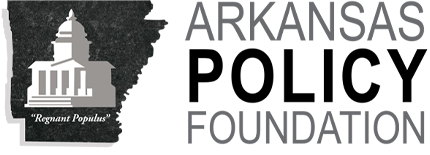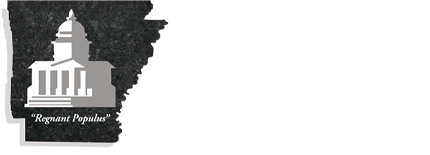“The most callused aspect of the (Arkansas) education monopoly is that it willingly and deliberately forces children–except those whose parents have wealth–to attend bad schools. And it does so with financial resources taken from parents already struggling financially and at the expense of their ability to choose a better school for their sons and daughters.” Policy Foundation, 1998
(March 2020) Previous Policy Foundation research memos and news media have noted the prevalence of a significant school choice market in Pulaski County,1 Arkansas’ largest by population. Another school choice market exists in a nine-county area of East Arkansas where more than 8,000 K-12 students are enrolled in charter, private and home schools, according to public records.
School Choice at the National Level
EdChoice, an Indianapolis-based nonprofit notes in a survey that “more than half of the United States offer families educational choice options.”2 Program types include education savings accounts (ESAs), vouchers, tax-credit scholarships, and individual tax credits.
Arkansas is part of the 12-state Southeast region, which leads the U.S. in the number of states (10) offering school choice programs.
Alabama tax-credit scholarships, individual tax credits
Arkansas vouchers3
Florida tax-credit scholarships, vouchers, ESAs
Georgia tax-credit scholarships, vouchers
Louisiana tax-credit scholarships, vouchers, individual tax credits Mississippivouchers, ESAs
North Carolina vouchers, ESAs
South Carolina tax-credit scholarships, individual tax credits Tennessee ESAs, vouchers
Virginia tax-credit scholarships
1 APF research memo (December 2018) “Pulaski County School Choice Market Larger Than 3 Of 4 Public K-12 Districts” https://arkansaspolicyfoundation.org/PULASKI%20COUNTY.pdf
(November 2019) “Pulaski County School Choice Market Surpasses Little Rock Enrollment” https://arkansaspolicyfoundation.org/PULASKI%20CO%20SCHOOL%20CHOICE,%20LRSD.htm Arkansas Democrat-Gazette. “Embrace change.” March 21, 2020
The December 2018 memo noted more K-12 students participated in the Pulaski County market in the 2018-19 school year than totalenrollment in three of four local public districts (Pulaski County Special, North Little Rock, Jacksonville-North Pulaski). The Little RockSchool District was the only public district with a greater enrollment than the market. But by November 2019, county-wide enrollment in the choice market exceeded Little Rock’s enrollment. 2 “School Choice in America.” https://www.edchoice.org/school-choice/school-choice-in-america/
3 Arkansas Department of Education:
School Choice in East Arkansas
The east Arkansas school choice market includes at least 8,358 K-124 students enrolled in nine counties: Arkansas, Craighead, Crittenden, Greene, Lawrence, Mississippi, Phillips, Randolph, and White.
Charter Schools. The state Department of Education reports5 1,907 students6 enrolled in east Arkansas conversion charters in the current school year. ADE explains, “A conversion school is a public school converted to a public charter school. (They) can only draw students from within the school district’s boundaries.” Another 1,3437 students attend open-enrollment charters, operated “by a governmental entity, an institution of higher learning or a tax-exempt non- sectarian organization. Open enrollment schools can draw students from across district boundaries.”
Home Schools. The state Department of Education reports8 2,980 students attended home schools in the nine counties in the 2018-19 school year. The agency has not released a report for the current year, though enrollment has increased in recent years.
Private Schools. The Arkansas Nonpublic School Accrediting Association (ANSAA) reports 2,128 students9enrolled in private schools in eight counties.
Economic Analysis
In economic terms, demand from parents, guardians and students is the reason for the existence of these markets, though supply is insufficient. Dr. Milton Friedman (1912-2006), recipient of the 1976 Nobel Memorial Prize in Economic Sciences, wrote widely on the topic. One way to increase the supply of educational options is through programs utilized by other states. These include ESAs, vouchers, tax-credit scholarships, and individual tax credits.
–Greg Kaza
4 A school choice market has existed at the post-secondary level in east Arkansas for more than a century. Participants include Lyon College (1872), Arkansas State University (1909), Harding College (1924), Williams Baptist University (1941), Crowley’s Ridge College (1964), and Phillips Community College of the Univ. of Arkansas (1965).
5 http://dese.ade.arkansas.gov/divisions/public-school-accountability/charter-schools
6 The Academies of West Memphis (10-12) 1,058; Blytheville High School-A New Tech School (9-12) 535; and Osceola STEM Academy (5-8) 314.
7 Imboden Area Charter School (K-8) 58; KIPP Delta Elementary Literacy Academy (PK-5) 483; KIPP Delta College
Prep School (6-8) 251; KIPP Delta Collegiate High School (9-12) 195; KIPP Blytheville College Prep (K-6) 200; and KIPP Blytheville Collegiate High School (7-12) 156.
8 http://dese.ade.arkansas.gov/divisions/learning-services/home-school
Following is home school enrollment by county: White, 1042; Craighead, 742; Greene, 410; Crittenden, 230; Lawrence, 145; Mississippi, 143; Randolph, 132; Arkansas, 86; and Phillips, 50.
9 http://www.ansaa.com/uploads/2/6/1/3/26134429/ansaa_directory_2019-2020.pdf
Following is private school enrollment by county: White, 687; Craighead, 294; Greene, 343; Crittenden, 225; Phillips, 192; Mississippi, 93; Arkansas, 194; and Randolph, 100.









